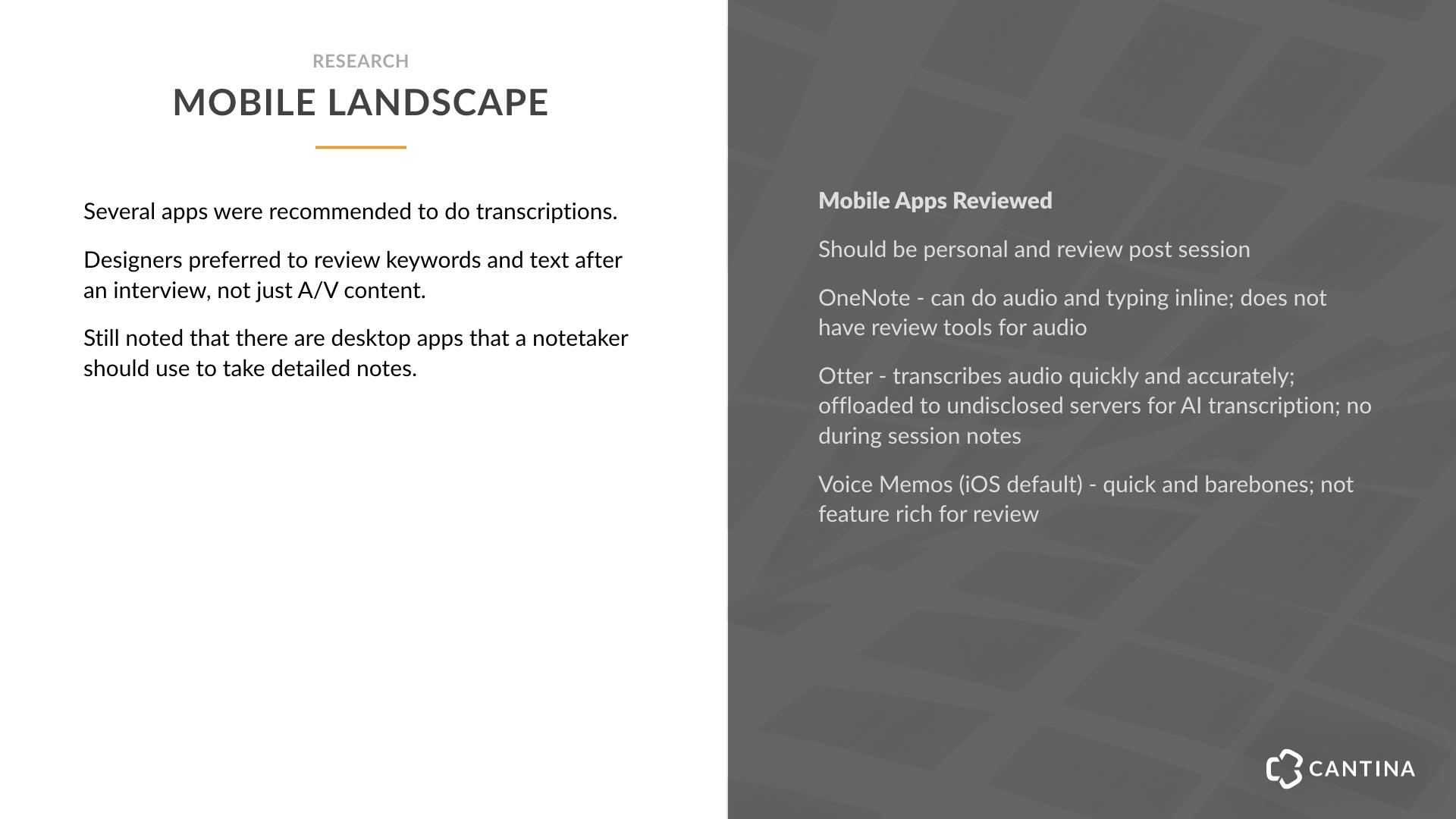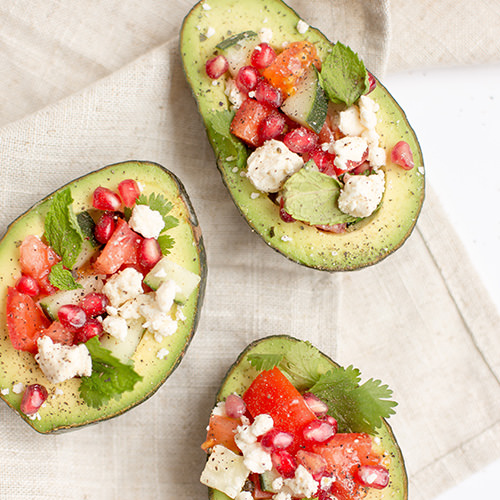Ask any designer, and they will tell you user interviews are the cornerstone to designing and building a product (or service) that people will buy and use. But when it comes to capturing this valuable information, the tools available are far from sophisticated. Most designers will use a combination of familiar tools like pen and paper, a video/audio recorder, and a laptop for taking notes and reviewing them later. From there, identifying important insights is a complex task, requiring designers to compare notes, listen to recordings, and, in some cases, reconstruct pieces of the interview from memory. All that takes a lot of time.
With that in mind, Randy Duke proposed a solution to this problem during his two-week onboarding process at Cantina, where he was asked to design an app that can change the world. We sat down to talk with him about his project, called Intoview, and how it could potentially help designers reduce the time it takes to review user interviews.
At Cantina, we strive to create digital products and services that seamlessly fit into people’s lives. What inspired you to build this app?
I was inspired to build the app by identifying a bottleneck in the user research delivery process. It is very time-consuming to listen back to very long interviews, and transcription can be expensive. Besides, being an active listener should be rewarded. I decided to create Intoview as an audio transcription app that would allow a user to tag specific timestamps while recording. Another feature I wanted to ensure it would have would be user-friendly review of the recording which would show the tags, as well as a transcription of the recording.
I am not alone in saying I’d rather spend more time analyzing my collected data than organizing it from its raw form. The less time it takes to sort through the material, the more energy I can spend understanding what was said.
What type of research did you do to help validate your solution?
I did a blend of interviewing, eliciting feedback on social media, and market research. Due to the time constraint, I spent more time working on research than user testing the idea.
I started by asking some senior members of the design team here at Cantina about their experiences conducting research, and about how mobile technology has played a role, if at all. They had very useful advice that helped me compile a short list of existing apps to try out.
After a few quick Google searches for “Best iOS audio interviewing apps” and a visit to the iOS App Store, I downloaded several apps with compelling features and passionate user feedback. I also turned to the Designers Guild Facebook group to ask designers and enthusiasts from around the world what mobile audio recording tool or feature they couldn’t do without. One unexpected result I had learned was that several users had mentioned the need to have a great transcription service.

Once I had my shortlist of apps and had used each of them for around twenty minutes or so, I wrote down a few compelling features for each app, along with areas needing improvement, and I used those lists to define a set of features to incorporate into Intoview.
What was the most pressing issue or challenge you wanted to address with this project?
I wanted to change the phone from a tool of convenience to something useful and viable for interviewers. There are several apps that have features useful for recording and later transcription, but none that offer a chance to place bookmarks at any point during a recording. As for graphical user interface challenges, I wanted to find a simple way to display options during recording while not cluttering the interface.

How did you use design to overcome some of these challenges?
I used design thinking to view the interview process as a series of three phases: preparation, interviewing, and analysis. Once I had identified my phases, I looked for places where each one could be augmented by technology, to make it easier to review notes later and help users find the important phrases from an interview recording. By capturing this information at the time, we can present it to the user later, allowing them to zero in on the important parts later in the form of tags.

What insights did you learn that influenced your design approach?
By taking the time to identify a problem without prescribing an immediate solution, I was able to use interview data and a problem statement to drive my discovery. The more people I asked, the more it challenged and developed my understanding of the problem and of whether my solution would be useful if built.
One unexpected point that I initially disregarded was the sophistication of modern natural language processing. I found several mobile apps that were able to transcribe long interviews for free without needing a human transcriptionist. Given that discovery, it seemed natural to include automatic transcription as a feature that would satisfy the user need I had found in my research question to the Facebook group. The easier it would be for an Intoview user to find a phrase from a recording, the better.
What would your next steps be if you wanted to see this project launch?
Testing, testing, testing!
There are several parts of the app I’d be interested in testing with possible users. I’d like to find out whether designers have any interest in changing their current workflow with a mobile app. I would love to put this app in the hands of those who conduct interviews in the field to see how what changes and additional features they would like to see.
Give it a try with this interactive prototype of Intoview.
If you’re interested in learning more about Intoview or have a similar project you’d like to talk about, please send us an email.



